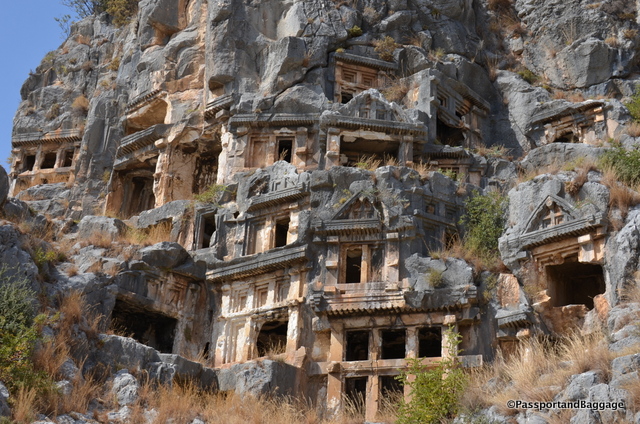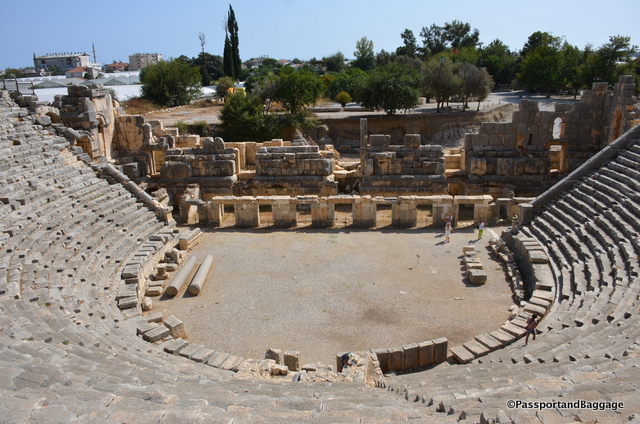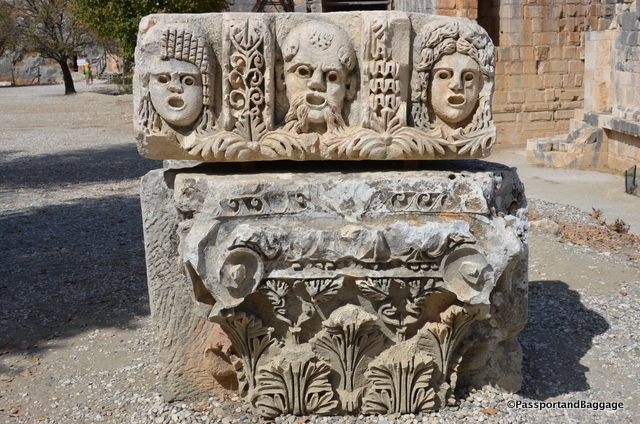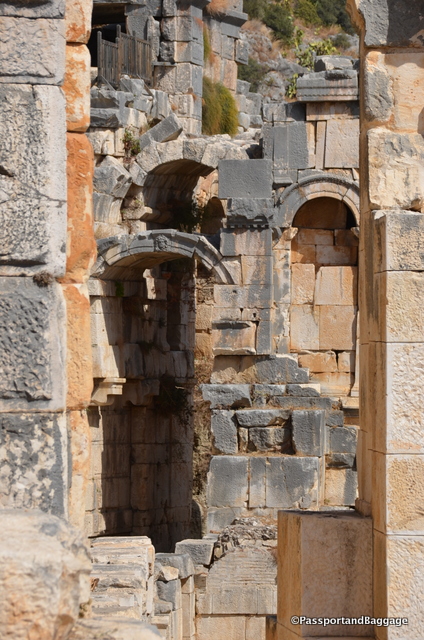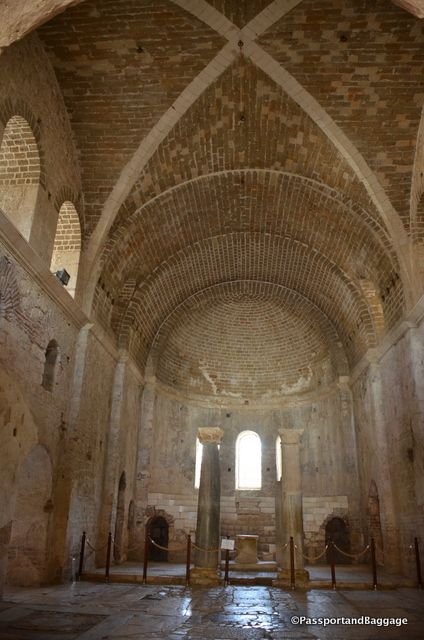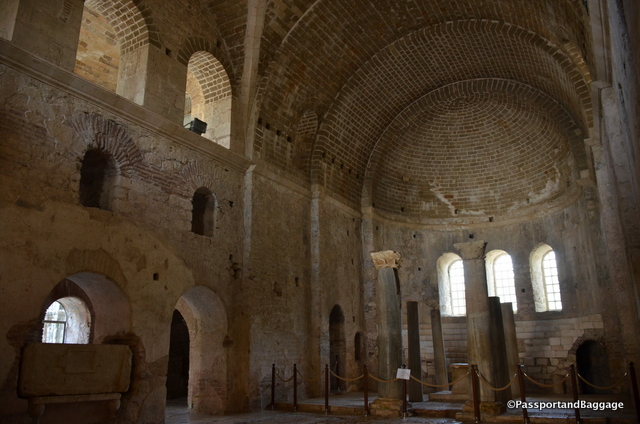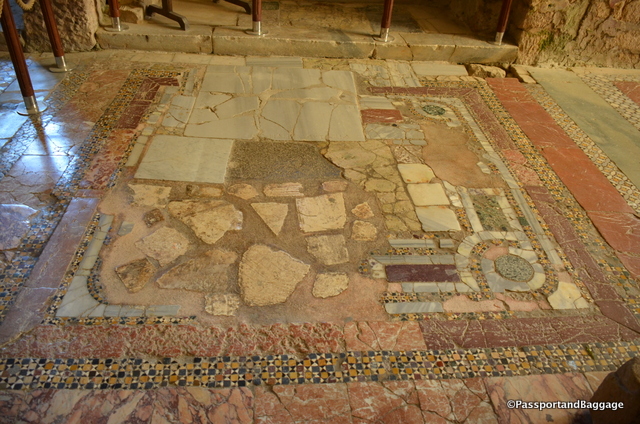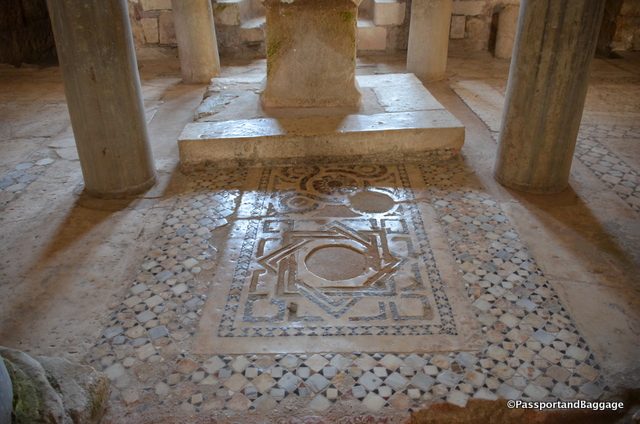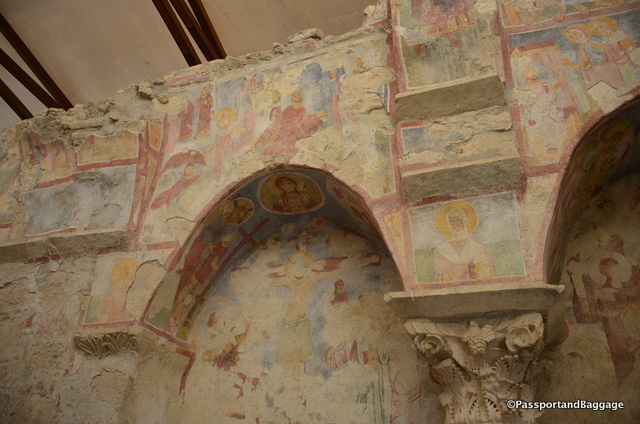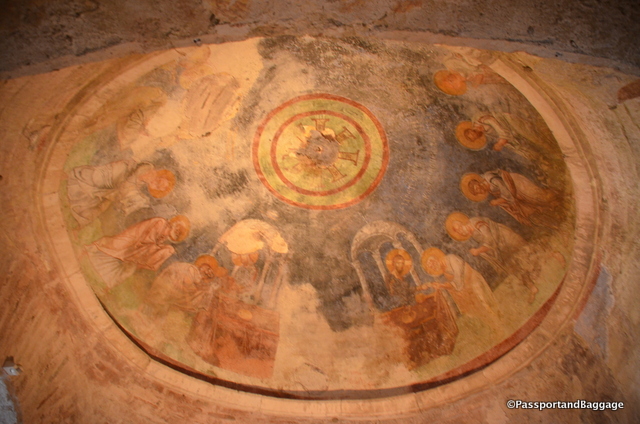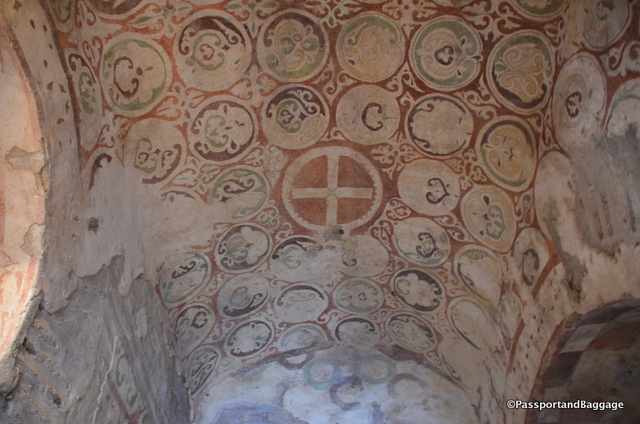October 8, 2016
Myra was an ancient Greek town in Lycia in the fertile alluvial plain between Alaca Dağ, the Massikytos range and the Aegean Sea. It now is part of Turkey on the Mediterranean Sea.
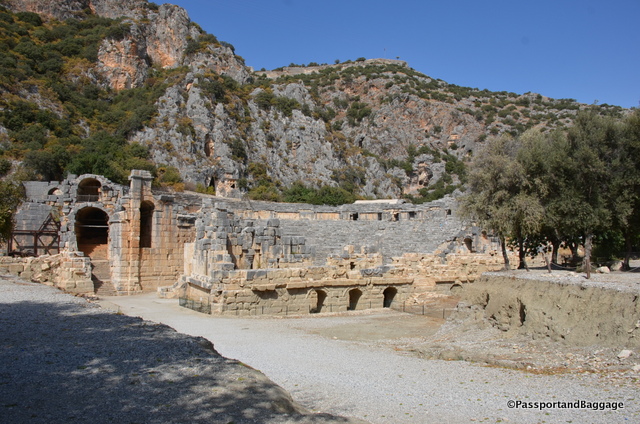 The first known reference to Myra was when it was listed as a member of the Lycian alliance in 168 BC–AD 43.
The first known reference to Myra was when it was listed as a member of the Lycian alliance in 168 BC–AD 43.
The ruins of the Lycian and Roman town are mostly covered by alluvial silts. Some of the ruins have been partially excavated, including the semi-circular theater that was destroyed in an earthquake in 141, but rebuilt afterwards.
The most interesting thing at Myra, and the real reason for our stop here were the rock-cut tombs. These were carved in the cliffs at Myra in the form of temple fronts. There are two sets of these tombs, the river necropolis and the ocean necropolis.
Another reason to visit the town is the Church of St. Nicholas. The church was built in AD 520 on the foundations of an older Christian church where Saint Nicholas served as a bishop. Over time the church was flooded, filled with silt, and buried. In 1862 it was restored by Russian Tzar Nicholas I, who added a tower and made other changes to its Byzantine architecture. The church is regarded as the 3rd most important Byzantine structure in Anatolia.
In 1968 the former confessio (tomb) of St. Nicholas was roofed over. The Church is on the tentative list to be a UNESCO World Heritage Site.
The floor of the church is made of opus sectile, a mosaic of coloured marble, and there are some remains of frescoes on the walls. An ancient Greek marble sarcophagus had been reused to bury the Saint; but his bones were stolen in 1087 by merchants from Bari, and are now held in the cathedral of that city.
*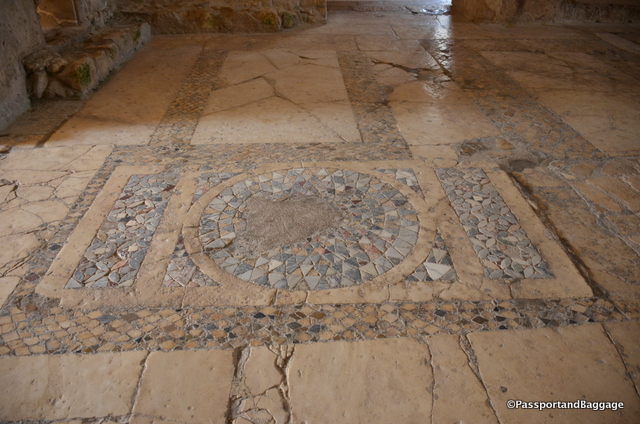 Saint Nicholas was born in Patar in the second half of the 3rd century and was the Bishop of Myra. He was beatified after his death and became the most popular Saint of Tsarist Russia, this is the reason for the hordes of Russian tourists, found in more normal times in Turkey. When we visited there was simply a very small bus of Russian tourists, and ourselves.
Saint Nicholas was born in Patar in the second half of the 3rd century and was the Bishop of Myra. He was beatified after his death and became the most popular Saint of Tsarist Russia, this is the reason for the hordes of Russian tourists, found in more normal times in Turkey. When we visited there was simply a very small bus of Russian tourists, and ourselves.
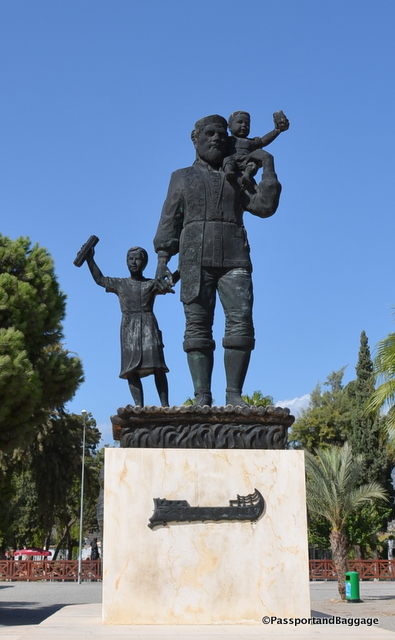 Saint Nicholas was also honored in Freiburg, Germany; Bari and Naples of Italy and the whole of Sicily. He is known as Santa Clause in English and Dutch.
Saint Nicholas was also honored in Freiburg, Germany; Bari and Naples of Italy and the whole of Sicily. He is known as Santa Clause in English and Dutch.
Saint Nicholas was especially favored by the sailors of the East Mediterranean, who put pictures and icons of him in all their boats and made a tradition out of the wish “May Saint Nicholas hold your rudder”.
An example of the mosaics found throughout the church:
